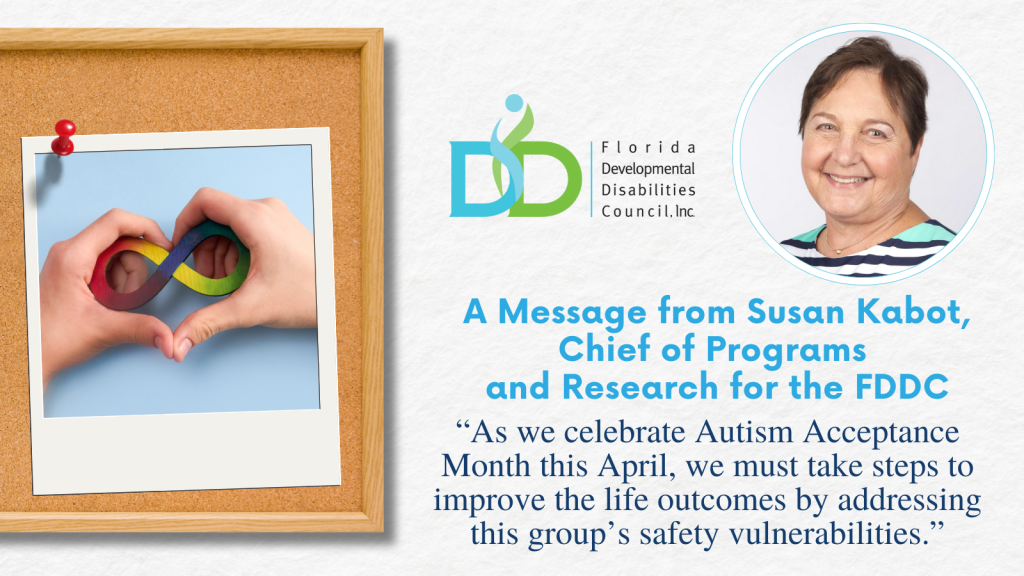As the parent of an adult with severe autism as well as a professional with a lifetime’s work developing and supervising educational programs for many others on the autism spectrum, I have developed an understanding of the importance of safety measures in the home, in schools, and across community settings. As we celebrate Autism Acceptance Month this April, we must take steps to improve the life outcomes by addressing this group’s safety vulnerabilities.
There are many challenges that autistic people face because of their communication, social, and behavioral characteristics. A significant percentage have co-occurring intellectual disability and an even larger percentage have co-occurring mental health issues. Approximately one-third are non- or minimally verbal. Their awareness of danger may be limited, and problem-solving is difficult when they need to make safety decisions.
There are several actions that the Florida legislature is considering to improve the safety environment for this group. Parents report that 40% of their children had a wandering incident, where they left a supervised, safe space. These may have significantly negative consequences, leading to injury or even death.
One result of wandering may lead to drowning incidents, as children with autism are often attracted to bodies of water. Unfortunately, Florida leads the country in drowning deaths for children with autism. The Children’s Services Council of Palm Beach County has conducted research documenting the number of drowning deaths and those that can be attributed to children with autism. At least 34 children with autism have drowned in 2024, with another 2 in the first two months of 2025. Although we think of drowning as an issue for young children, 60% of drowning cases for children with autism are for those aged 5 years and older. Many of these deaths are preventable with parental education; the provision of safety devices like door alarms, fences, and wearable trackers for the children; and advanced registration of people with autism with law enforcement agencies.
Other vulnerabilities include the inability to communicate when being harshly treated or even abused by others in their environments. Parents of nonverbal or minimally verbal children are always concerned about their children’s treatment and know that they can’t protect them 100% of the time. Unfortunately, incidents like this occur and are often unreported in the popular press.
As April approaches, let’s recognize the role of legislation and the number of steps that parent advocacy organizations are taking to put measures into place to increase the safety environment in our state. Bills to have schools develop safety plans to search for missing students, require cameras in self-contained special education classrooms with children with autism, train law enforcement officers about autism, and address swimming safety would all reduce the number of tragic incidents involving those with autism.

